
A glorious mixed border is one of the most beautiful but daunting sights in gardening. The British make it look so easy, a shrub rose here, some tall foxgloves there, flowers and foliage in just the right mix of color and height. None of it dying, apparently. (The one above is in Scotland, to be precise and ancestry-allegiant.)
In real life, mixed borders often devolve into a row of unrelated plants, each standing stick-straight like guests at a miserable party where bark ground cover plays the ubiquitous bad party host.
But if you start simply, you can enjoy a more congenial version. Here’s my experience.
Way back when we remodeled, 22 years ago, we also redid the landscaping. Eventually. After receiving a ticket from our little city for weeds of a “noxious and downy habit.” Thanks, neighbors. As part of the project, our brilliant landscape guy insisted on a border of fleabane and lavender.
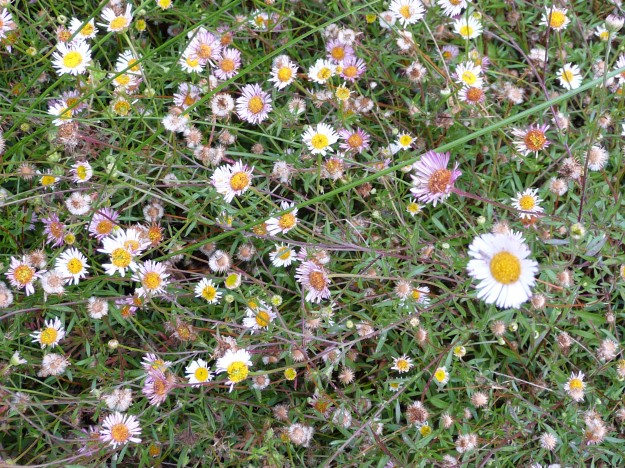
Fleabane? Yes. Scientifically known as Erigeron, or in one of its guises, Santa Barbara Daisy – if you want to get fancy. I have to admit that I prefer common plant names to the Latin, despite the risk of misidentification. Since I can’t remember Latin pronunciations, I always read the names as follows: “*Glyph* is a lovely flower to be sure, but remember that *glyph* cannot tolerate drought,*” and can never remember them.
Fleabane grows like a weed, looks like a daisy. Needs very little water, tolerates all kinds of abuse, even small people’s flying soccer balls, and mothers in a hurry to Cut Back The Garden Before Carpool.
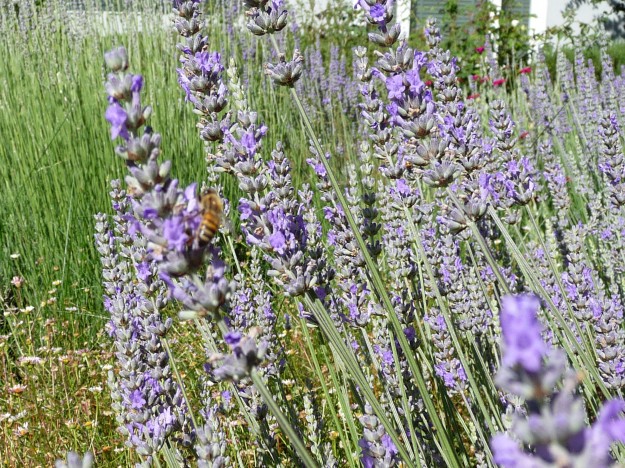
Lavender, on the other hand, is one of the world’s best-loved flowering plants. I would define world to include both elite French perfumers and the at-risk honeybee. Plant for the hive, everyone, the global hive. Because lavender is so beloved, it’s available in many varieties. People seem to agree that the English sort is the most resilient. It doesn’t much like the damp, so would probably be tough to grow in the tropics, and terribly cold winters will kill a plant or two, but don’t let a lot of talk about soil and climate requirements scare you off one of the most beautifully scented plants on the planet.
So, we planted the border as directed. It was nice. Then, maybe 5 or 6 years later, an elderly neighbor came by with some seeds from his Rose Campion, also known as Lychnis Coronaria. Or Bridget-in-her-bravery, which how great is that? We planted them.
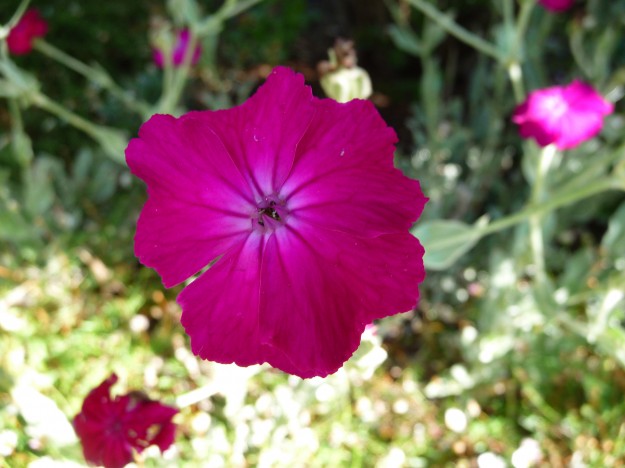
And then the border was great. Multi-color, multi-height, a different look from every angle. Now, another decade later, it’s got a life of its own. Over time, the Rose Campion comes and goes. It’s a self-sower, which means it grows, dies, sows seeds, grows again. I never quite know where it will show up. And it’s easy to pull out, so if I get pouty over placement, I can fix it.

The Fleabane just keeps on growing. Gets ratty, gets cut back. Grows outside its boundaries, gets yanked out.
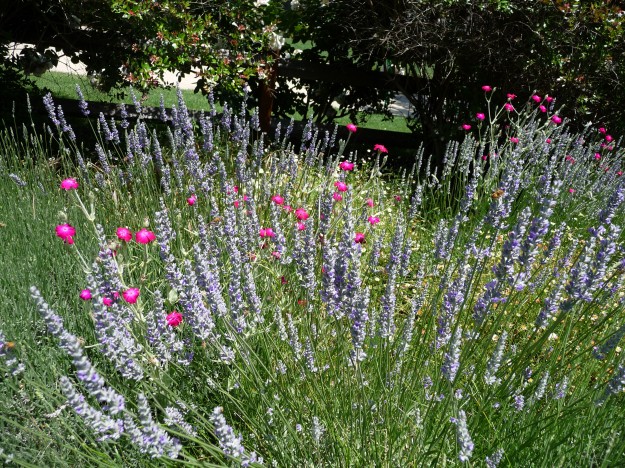
And I’ve had to replace the lavenders, at least once, maybe twice, I can’t remember. Originally I believe we planted Hidcote, then perhaps Augustifolia. In any case, you can see that there’s now one plant that’s taller than the others, with fewer flowers. That’s because it’s too close to the lawn sprinklers. The rest of my front yard is on drip irrigation, so I can water the roses but let the various dought-tolerant souls dry .
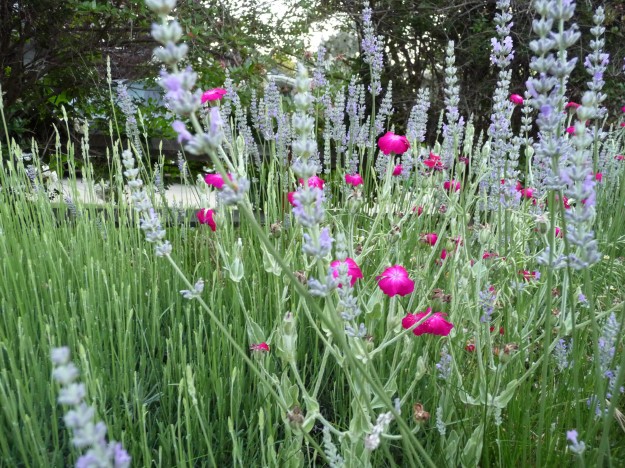
At the end of this bloom season, I’ll probably dig out that overly-green lavender and replace it with a shorter Hidcote. A few of them remain from years gone by, so it should work. Well enough. And my approach to gardening is all about the Well Enough. The “Hey, It Smells Good Whether It’s In The Perfect Spot Or Not.” The “Don’t You Dare Intimidate ME With Specimen Talk.” The “I Know This May Not Even Count As A Border But It Feels Like One To Me.”
See, I figure that gardens are private. I know this one happens to sit in my front yard, but that makes it part of my house. And in my culture, as I have said, house is home and therefore not for burnishing unless one is so inclined. That’s one of the difference between gardens and wardrobes; your clothes are public, worn out and about in situations with social context, and therefore the Appropriate matters.
At home, it’s all about the pink. And the astringent, tongue-tingling, vanishing scent of a lavender bud crushed between finger and thumb. Almost piney, the fragrance, but not.
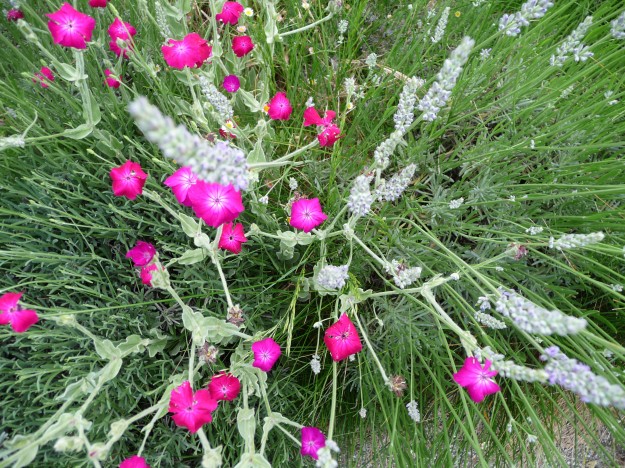
What is this border not good for? Cutting. Fleabane gets very ratty, Rose Campion flowers are nearly always raggedy, and Lavandula’s native symmetry means it can only spare 5 evenly-spaced stalks per plant. Is this border replicable? We can’t forget geography. If you live somewhere humid, these plants may be tough to grow. But I know you’ve got the moral equivalent available, and probably some of you know what it is.
I planted these in 1-gallon pots. These days, I might be brave enough to try seeds, or rooting a cutting of the lavender, which is apparently possible. But that’s only because I’ve got time to spare. In any case, I plant organically grown for the sake of the bees. Turns out that plants grown at the big box stores may be so flooded with pesticides that for the rest of their days they are poisonous.
For online sources, Amazon offers organic seeds, so do other companies, in the USA and in Europe. Otherwise, let’s all visit our local small nurseries and dawdle in the aisles, sniffing, looking, poking around. I like to go early in the morning, when the air is full of promise, mist, and oxygen.
Seeds: Lavendula, Erigeron, and Lychnis Coronaria.
Photo Credit: Scottish Mixed Border photo by Bernard Blanc, courtesy Flickr Creative Commons
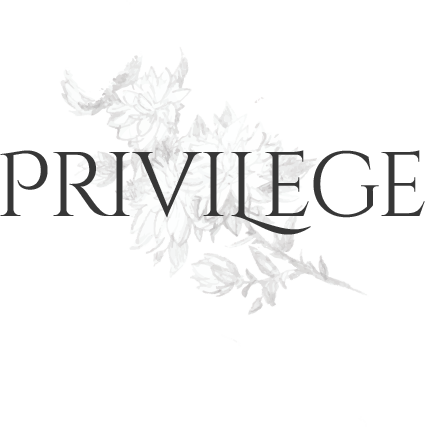
37 Responses
Oh my word! I never even gave a thought to all of the pesticides that they use at the big boxes where I have sometimes found my plants. Thanks for an important reminder, Lisa.
I’m one in favor of a wilder looking natural border. I think it harkens back to days of being a sensitive, hormone-driven sensitive teen, who would take my “book du jour,” usually a weepie, and a blanket to go lay in the field of wild flowers behind our house and read on lazy summer days. Obviously, this was pre-tick era.
I’d love to have lavender, but being next to the windy and sometimes angry ocean,I have to find plants that stand up to salt-spray and high winds. Not that I’m complaining!
@Mamavalveeta03, I used to hide in fields and read too:).
One of the gardens I’ve been admiring at the shore has quite a lot of lavender. It’s about a block back from the shore, and maybe more protected.
This border seems tall. Is is supposed to be holding a hillside or screening the lawn and soccer balls from a street or driveway?
@RoseAG, No. It’s just tall;).
When will we see the rose pics?
@Linda @ a design snack, I showed them in this post – do you want more? https://lisacarnochan.com/2014/05/love-suburban-rose-bed-saturday-morning-746am/ In California we’re past the first bloom, and just getting ready for the repeat.
I used to be great with plants, both indoor & outdoor. Last 2 yrs., turned into plant killer. Now investing only in plants that can’t die. Hardy, very hardy…
Can’t tell you how much I enjoyed seeing these photos. I’m a fan of lavender and plant more faithfully each year. Here in Zone 7b it doesn’t do quite as well as other herbs such as rosemary. I’m going to try Hidcote again. And thank you for the reminder on Rose Campion. I don’t see it much in local gardens –but since I broke my ankle I’ve missed a lot of the blooming time this year– and I’m all for trying something less trendy. Kind of like fashion, but with flowers.
@Lydia, I liked that aspect too, the old-fashioned garden.
I live in Albuquerque NM where we have a lavender festival every year! Lavender loves our hot, dry climate, but I do have to replace plants that die out in the center. I have three Lavender x Grosso and they get huge! Like four feet across. One of them is doing the die-out thing now and I have to replace it–bummer because they will never be the same size.
Rosemary does well here as a shrub if the right varieties are selected. Germander is good, along with Jupiter’s Beard, sage, thyme.
Your mixed border is lovely and I look forward to more gardening posts!
I adore my small nursery and try to add almost monthly if not weekly to my garden!They are so knowledgable and they have fun, happy people working there!That know there stuff!
Your garden is beautiful…………..
Part of me wants to tumble some nasturtiums in there just for an electric contrast….
@Laura Holmes, Yes, if this border were longer, I’d definitely add something. What I haven’t shown here is the extremely large orange/apricot climbing rose bush that’s about 15 feet closer to the house. So the effect of the front yard, over all, is as you suggest.
Oh, I love lavender!! There’s a huge lavender farm on the Cape that I keep meaning to get to.
@Mamavalveeta03, we have catmint in our border, stands up pretty well to salt and wind and looks a bit like lavender.
Lisa, that is a brilliant landscape for your climate. Ecco friendly, easy to care for,& beautiful.
You ARE a gardener!
@Sandra Jonas, <3
Purty! Do you ever do vaguely crafty or edible things with dried lavender?
I do think a lot of the success of gardening is picking the right things for your climate. For example, roses in Auckland, New Zealand are always a battle ‘cos it’s really too humid and the sun is too bright. Blackspot is rampant. (Still, I love roses, so I would persist).
England is a much friendlier climate to garden in as weeds grow so much more slowly than in sub-tropical NZ.
@Eleanorjane, I have put lavender in my lemonade. But I am horrid at crafting:).
I love your border garden! I’m so glad you are aware of the hazards of the “big box store” plants. I have been trying to spread the word for years. I am very grateful for the organic nurseries in the Bay Area.
Happy planting!
Erigeron (or seaside daisy as I know it) is wonderful. I use it everywhere as fill between bigger plants – and where I haven’t, it’s only because I’ve planted alyssum (which smells deliciously of honey) or California poppies (which just keep self-seeding).
I would also add – no such thing as too much lavender or too many roses (except at pruning time).
In the four-season and damp climate near NYC where I live near salt water, catmint (which like all mints is hard to kill), Shasta daisies, Russian sage and daylilies are among my go-to plants. I tried lavender many years ago but it’s just too wet here – or at least that’s my excuse for having killed it.
Beautiful border. There is something so friendly about a plant that reseeds itself freely, isn’t there? I love that. And lavender does tend to sort of dry up and die after a few years. Luckily it is easy to grown back. It is really very easy to start from a slip. Here in the central valley, I get it coming up volunteer, if you can believe that.
I love you, Lisa. There, I’ve said it. I so look forward to your posts that I often put them off for a few days to save for a special treat. I don’t garden but I love to hear you talk about it.
Thanx
:)(:
@pamela gene daley, What a lovely generous thing to say. xoxox.
Lovely photos of a very attractive, practical garden (might one even call it Sturdy?) Our first visit to France, we did a house exchange with a family in Blois. Their only concession to landscaping was a deep, long border of lavender across the bottom of the property. And what a concession that was! Its simplicity and strength have stayed in our memory for almost 25 years…visual and olfactory, even auditory, rich with the sound of bees…. I suspect your border must have the same effect.
Lovely! In my own garden, I am fighting a losing battle against trumpet vine, honeysuckle, and wild grape. Fleabane sounds like a plant that might be able to stand up to those bullies.
Lavender is not hardy in the Upper Midwest where I live, nor are the other two, probably. Abundance like that is difficult to achieve when you live in zone 4, unless you love hosta and day lilies. So sad.
Avoiding the big boxes is important, but many small nurseries buy from big growers. We all need to learn to look for native plants, grown with out pesticides. Most nursery raised plants planted in the last dozen years or so are likely to have been raised with neonicitinoids (pesticides) that kill butterflies and bees, so we all need to start thinking about this, wherever we happen to live.
@Ellen, I kept reading that some lavenders do survive cold winters – is that a myth?
I adore your border, just as I adore lavender. Unfortunately I have lived in places that fail to be lavender-friendly. In my old house my border could be somewhat unruly, surrounded by woods and cliffs as it was; in my new abode I suspect that unruliness would be frowned upon by the neighbors, and I do wish to remain in their good graces. I agree that your seems to be a very sturdy border.
Just yanked lavender which did not survive the long-lasting snow this year. I probably did not tend them well enough. I love the scent that wafts when I walk past and will plant again after we get our new roof next week (thank you hail storm). I like tickseed coreopsis for a splash of gold within puffs of feathery green…looks good on an edge.
I’m not sure you’re asking for suggestions, but if you are, and you’re generally open to them – here are mine. I think it’s lovely and very “wild” looking, but if it were mine, I’d like to see a bit more variation in size and color of the leaves and stems. I love some dark green with some whitish sage, etc. because I do think that borders look best with some play of back and forth. Hope it’s OK I chimed in?
@kathy, Yes! Chime in! I completely agree with you – and the reason this border is so uniform is that it’s part of a small front yard that has 5-6 small “regions,” if that’s the right word. The rest of the “border” of the lawn and path includes, an apricot climbing rose, a rosemary hedge, more lavender, lamb’s ears, native California iris, a fieris bush, a variegated pittosporum hedge underplanted with plumbago, more iris, and species geraniums. Also a dogwood tree, which recently replace an eastern redbud whose electric pink I hated:).
Were I to extend that lavender/fleabane border, instead of having separate “regions,” I would definitely add some more foliage in different shades. I like that subtle visual interest. My back yard is all about the leaves:).
So happy to have you chiming in. I am completely uneducated, and looking forward to learning.
Well, as you describe the yard, it sounds really nice, and I’d love to see a photo of it as you’d see it from the street, if that’s possible? Hard to imagine with just certain areas shown how it all works together.
I’ll try. From the street what you mostly notice is the raised beds:). It’s not a normal front yard – the raised beds are just wood, and were built originally to be for vegetables. #oldhippies #northerncalifornia
I love the Bridget-in-her-bravery, both the colour and the name! Also these garden pictures make me happy, I do like a slightly wild, but beautifully curated selection of plants.
Comments are closed.